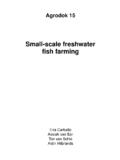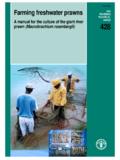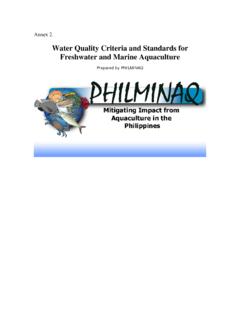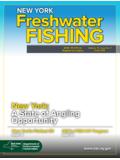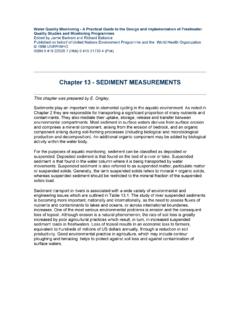Transcription of Australian Government Australian Shorebirds …
1 Small Plovers and TurnstoneAustralian Shorebirds Identification Sheet male breedinglong legsadult breedingadult breedingnarrow billgreaTer Sand Plover21cm. M19cm. M15cm. r18cm. r21cm. r25cm. M19cm. M17cm. r23cm. Madult non-breedingadult breedinglarge heavy billleSSer Sand Ploverred-caPPed Ploverred-kneed doTTerelhooded Ploveradult non-breedingadult non-breedingsparsely vegetated plains of arid inland and coastal mudflats and beaches of northern australia adult malebare mudflats and margins of inland and coastal saline wetlandsrufous capadult femalebill short and stoutdarker maskadult breedingdouble-banded PloverorienTal Ploverblack-fronTed doTTerelruddy TurnSTonebill short and narrowadult non-breedingadult non-breedinguses stout bill to flip stones, shells, seaweed and drift-wood on sandy or cobble beaches, rock platform or reef of coastal australiapairs or small family groups on dry margins of feshwater wetlands large or smallshort pink legsbright orange legs and feetfor more information visit by Jeff daviesr = resident = migratory.
2 Measure in centimetres after each species name denotes length from bill tip to end of tail. feeds in shallow margins of inland freshwater wetlands including temporary shallows after rainwedge shaped billblack breast band and head, chestnut flanks, distinctive white throatlong legs with pink upper halfshort rear endsandy ocean beaches of southern australia , open edges of saltlakes in south-west australiadistinctive black markings on face and breastbandwinter visitor returning to new Zealand for summerdistinctive black hood and white collarcoastal mudflats and sandy intertidal zones, also open bare margins of inland freshwater and saline marsh, south-east australiacoastal mudflats and sandy intertidal zonescoastal mudflats and sandy intertidal zonesAustralian GovernmentDepartmentof theEnvironmentand Water 119/12/2007 9:58.
3 51 PMLarge Plovers, Lapwings, Stone-curlews and JacanaAustralian Shorebirds Identification large feet for walking on (northern australia ) (eastern australia )large billopen short grasslands and semi arid rangeland, southern half of australiabold black u-shaped breast band when viewed from frontlarge fleshy yellow wattlesmall bright red wattlemassive billlarge eyenocturnal, northern and north-eastern woodlands, declining in southbeaches, mudflats and small islands of northern and eastern australiatropical freshwater wetlands with abundant floating aquatic vegetationlong dark bar on wingvery noisy with a loud penetrating alarm calladult non-breedingadult non-breedingadult breedingadult breedingwide variety of short grass habitats, wetland edges, and modified urban environments21cm. r55cm. r55cm. r27cm. r29cm. M34cm. r25cm. McoMb-creSTed JacanabuSh STone-curlewbeach STone-curlew banded laPwinggrey PloverMaSked laPwingPacific golden Plovercoastal mudflats and sandy intertidal zones, roosting in short saltmarsh herbfield or paddockscoastal mudflats and sandy intertidal zonesMeasure in centimetres after each species name denotes length from bill tip to end of tail M = migratory.
4 R = resident by Jeff daviesfor more information visit GovernmentDepartmentof theEnvironmentand Water 219/12/2007 9:58:52 PMCurlews, Dowitcher and GodwitsAustralian Shorebirds Identification head without obvious cap or dark line through eyedark line through eye and dark capbill slightly upturned63cm. M34cm. M29cm. MeaSTern curlewaSian dowiTcherliTTle curlew42cm. M42cm. M39cm. MwhiMbrelbar-Tailed godwiTblack-Tailed godwiTadult non-breedingcoastal mudflats and sandy intertidal zonescoastal mudflats and sandy intertidal zonescoastal mudflats and sandy intertidal zonescoastal mudflats and sandy intertidal zonescoastal mudflats and sandy intertidal zones, also inland freshwater and saline marshadult non-breedingadult non-breedingadult non-breedingfloodplains and short dry grassland including lawns and recreational areas of northern australiaobvious dark cap with plain facebody plumage plainadult breedinglong heavy billadult breedingstraight billadult breedingbill thick with bulbous tipbody plumage streakedMeasure in centimetres after each species name denotes length from bill tip to end of tail M = migratory.
5 R = resident by Jeff daviesfor more information visit GovernmentDepartmentof theEnvironmentand Water 319/12/2007 9:58:54 PMOystercatchers, Avocet, Stilts, Pratincoles and SnipeAustralian Shorebirds Identification r39cm. r37cm. r44cm. r24cm. M21cm. r31cm. M27cm. r46cm. rSooTy oySTercaTcherbanded STilTblack-winged STilTred-necked avoceTorienTal PraTincoleauSTralian PraTincolelaThaM S SniPeauSTralian PainTed SniPePied oySTercaTchershallow freshwater swamps, erupts from cover with fast zig-zagging flight, eastern australiamalefemaleshallow freshwater swamps, sits quietly under cover becoming more active towards duskpale blue legsfeeds in shallow water rapidly sweeping slender upturned bill from side to sideboth pratincoles are graceful and tern-like while catching insects on the wingforked taillegs trail beyond square tailbold throat markingshort legsopen grasslands and floodplains of northern australialong legsopen grasslands and gibber plains of the arid interiorvery long pink legslarge dense flocks on saline lakes and saltpanstypically found on saline lakes and saltpans but also a variety of freshwater wetlands and coastal intertidal zoneslong pink legschestnut belly long billanother two species of snipe SWINHOE S, and PIN-TAILED are recorded in small numbers in northern and western australia .
6 They are both difficult to separate in the field from LATHAM S and each othermudflats and sandy intertidal zonescoastal rock platforms and rocky isletsstriped facea variety of inland saline and freshwater marsh, also coastal intertidal zonesMeasure in centimetres after each species name denotes length from bill tip to end of tail M = migratory .r = resident by Jeff daviesfor more information visit GovernmentDepartmentof theEnvironmentand Water 419/12/2007 9:58:55 PM large SandpipersAustralian Shorebirds Identification M27cm. M25cm. M24cm. M33cm. M25cm. M28cm. MgreaT knoTred knoTgrey-Tailed TaTTlerMarSh SandPiPercoMMon greenShankwandering TaTTlercoMMon redShanklongish billshort billbroad white in front of eye and behindthin needle billbase of bill redorange-red legsrobust slightly upturned billadult non-breedingadult breedingadult non-breedinghead, neck, breast and flanks streaked, feathers of back and wings with diffuse dark centresfeathers of back, wing and crown plain grey with fine dark centre lineadult breedingadult non-breedingmudflats and sandy intertidal zonesmudflats and sandy intertidal zonesmudflats and sandy intertidal zonesmudflats and sandy intertidal zonesadult non-breedingslate grey aboveplain grey aboverocky coasts and reefs.
7 Mainly Queensland and northern nSwnarrow white in front of eyeadult non-breedingadult breedingadult non-breedingadult breedingadult non-breedingcoastal intertidal zones and inland saline and fresh-water marshesadult breedingcoastal intertidal zones and inland saline and freshwater marshesMeasure in centimetres after each species name denotes length from bill tip to end of tail M = migratory .r = resident by Jeff daviesfor more information visit GovernmentDepartmentof theEnvironmentand Water 519/12/2007 9:58:57 PMSmall SandpipersAustralian Shorebirds Identification M20cm. M23cm. M15cm. M21cm. M21cm. M20cm. M21cm. Mcurlew SandPiPercoMMon SandPiPerTerek SandPiPerlong-Toed STinTbroad-billed SandPiPerred-necked STinTSanderling wood SandPiPerSharP-Tailed SandPiPerPecToral SandPiPeryellowish bill baserufous in capflies low with wings bowed down, bold white wing barbobs long tailupturned bill with orange basebold orange legsbroad white eye-stripestreaked breast ends abruptlylong down-curved billadult non-breedingadult non-breedingwhite patch between wing and breast bandadult non-breedingadult non-breedingintertidal mudflatsintertidal mudflatsadult non-breedingyellowish legsadult non-breedingadult non-breedingdrooped tipfound singly on rocky or sloped muddy margins of coastal or inland wetlands, also drains.
8 Channels and damsbroad bill for entire lengthadult non-breedingdark shoulder patch contrasts with very pale silver grey bodyadult non-breedingadult non-breedingshallow freshwater marshes with abundant aquatic vegetationadult breedingadult breedingadult breedingadult breedingblackish legsmuddy edges of well vegetated feshwater and brackish wetlandsadult breedingpale faceexposed sandy ocean beaches where tight feeding groups run quickly along edge of surf, also sandbars and mudflatsadult breedingcoastal intertidal zones and inland saline and freshwater marshcoastal intertidal zones and inland saline and freshwater marshcoastal intertidal zones and inland saline and freshwater marshcoastal and inland saline or freshwater marshMeasure in centimetres after each species name denotes length from bill tip to end of tail M = migratory.
9 R = resident by Jeff daviesfor more information visit GovernmentDepartmentof theEnvironmentand Water 619/12/2007 9:58:58 PM
